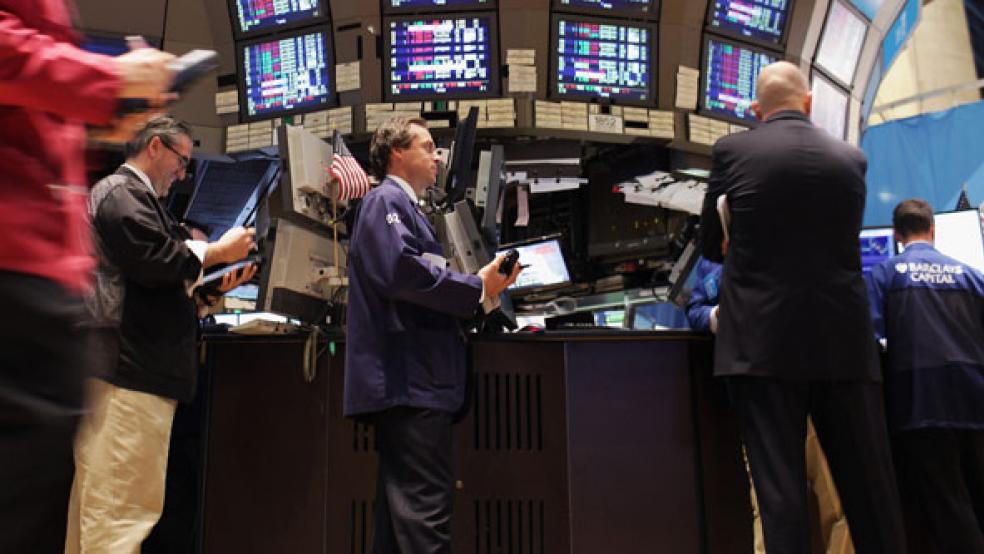Boo! If you thought last week’s market action — Thursday’s 335-point plunge in the Dow Jones Industrial Average made it the worst single day for stocks so far in 2014 — was just an unpleasantly early Halloween “trick” to follow the “treat” (a 275-point gain in the Dow) only the day before, you’re wrong.
What we’re seeing now is simply a return to normal levels of volatility, and it’s not going to vanish along with the spooks and ghosts of past bear markets when Halloween is over and November begins.
Yes, the great Wall Street crash of 1929 began in October of that year; and yes, it’s true that Black Monday in 1987 took place on October 19, while two subsequent “mini-crashes” also wreaked havoc on stock investors’ portfolios in 1989 and again in 1997. If you’re worried about real market calamities, though, you need to pay more attention to what happens in September than to October events.
What we are witnessing, however, could prove to be just as important as any of those market meltdowns were. (And, for context, Thursday’s big move really only amounted to a 2.1 percent decline; what is more significant is that, as Howard Silverblatt of S&P Dow Jones Indices pointed out, it marked the fourth consecutive day in which stock prices moved by more than 1 percent in either direction. The last time an index did that was nearly three years ago.)
We are at the end of an era, and these occasions are always fraught with uncertainty and volatility. The only surprise is that it has taken this long to show up in the stock market, and that we still haven’t managed to see the Dow fall as much as 4 percent below the highs it recorded in mid-September.
Welcome aboard the Dow Jones Terror Ride.
What’s changing? Well, what isn’t changing? The Federal Reserve is withdrawing its active support of the bond market. We’ll likely see an interest rate hike before very long. The Fed’s ultra-accommodative monetary policy fostered the prolonged period of below-average levels of volatility — and the attitude of investor complacency that accompanied it.
If bond yields remain at abnormally low levels, stock market valuations have diverged from the historical norm in the opposite direction. Not only are major indexes still trading at near-record levels, in spite of the recent setbacks, but the price/earnings ratios on those indexes also have diverged from historic norms. Consider the Standard & Poor’s 500-stock index, now trading at 18.5 times trailing earnings. That is well above the historical median of 14.57.
Of course, both of those factors have been in place for weeks, even months. On the margin, what has changed? Well, bluntly speaking, U.S. investors now find themselves in the only economy that is performing adequately. Last week’s economic news from other corners of the world was simply dismal. The International Monetary Fund has slashed its outlook for global economic growth. While Europe is the focus of most of its concern, its economists also pointed to problems in Latin America and Japan.
Then there were some earnings warnings. Most corporations have just closed the books on the third quarter and are preparing to release their numbers — and warning investors if they have fallen short of expectations. Overall, though, fewer companies have issued profit warnings than they did last quarter. Indeed, FactSet notes that the number warning of earnings shortfalls have been declining steadily all year.
It’s hard to point to any single one of those events and argue that it was a big enough catalyst to prompt volatility to return to levels not witnessed since the height of the European Union’s near-economic collapse in 2011. Which is really the point: What we’re witnessing is the end of a period of calm and complacency, not a market event triggered by any single specific piece of news.
Moreover, this isn’t altogether bad news. Too little volatility and too much complacency can be bad for investors and for markets.
Many hedge fund managers, and nearly all Wall Street traders, will welcome the return of volatility. When there isn’t uncertainty, there’s little demand for hedging activity; when there are clear trends, investors can simply and buy and hold. Investors or traders who rely on rapid changes in market mood and direction to fuel their own profits are confined to the sidelines. A resurgence in volatility will change all that.
Higher volatility levels might help separate good active stockpickers from their less talented brethren. As Warren Buffett famously quipped, “only when the tide goes out do you discover who has been swimming naked.”
Until now, investors have been able to simply buy the market — and the signs suggest that is just what they have been doing. Volatility will create more investment opportunities, by periodically driving asset prices down to irrational levels. Only the wiser investors will know which are real bargains and which are nothing but value traps.
So, fasten your seatbelts and enjoy the ride.
Top Reads from The Fiscal Times:






